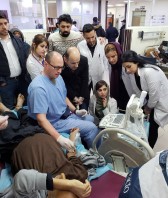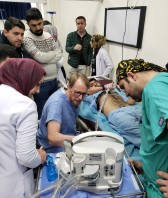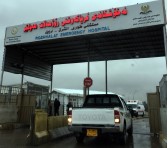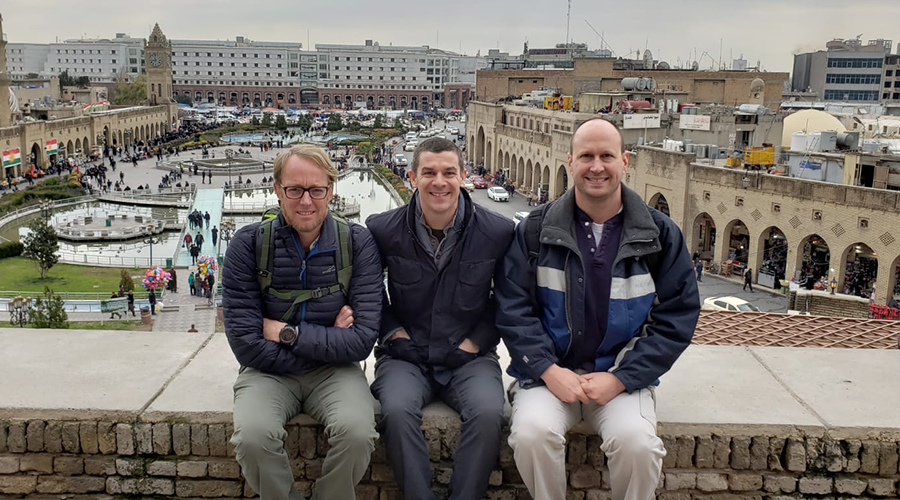By Dr. Bryan Balentine, MD, FACEP, TeamHealth Assistant System Medical Director of Hospitalist and Emergency Medicine. Originally published in ACEP Now, June 20, 2019.
Of your top 10 international travel destinations, where does Kurdistan rank? It wasn’t initially on my list at all. After all, who would want to spend their own money to travel to a war-torn country with Islamic extremists just waiting to harm someone from the United States? At least that is what I surmised after following years of international news. Trying to understand the complexity of the Islamic State of Iraq and Syria (ISIS), Syria, Syrian rebels, Turkey, Russia, and the United States, all with their own agendas fighting in a very concentrated area of the world, is a challenge when only familiar with the U.S. perspective.
In the middle of all this enter John Miller and One Vision International based in Knoxville, Tennessee. Even while the war was active against ISIS in northern Iraq, he would travel, usually alone, and coordinate humanitarian-aid shipments of water filters, coats for the cold winters, shoes, children’s clothes, wheelchairs, and crutches to help everyone displaced from the war. Through these experiences, he witnessed the need for a medical mission trip to Kurdistan.
I traveled with John and One Vision International multiple times to Haiti and the Dominican Republic. On some of these trips, one of my best friends from residency, Greg Jacobs, DO, came along. When John approached me about a trip to Kurdistan in northern Iraq, I said no multiple times for the reasons listed above. After each of his trips, he would provide me with an update, and I learned more and more about the kind and welcoming people there who were in need. After multiple invitations and a retreating ISIS, I finally said yes in mid-2018, and we started planning. One conversation later, Greg was on board.
The Trip

Dr. Balentine teaching peripheral IV access with ultrasound to attendings and residents.
Credit: Bryan Balentine
Day 1: We visited a military base and treated 100 soldiers for various medical problems. Several of these individuals had fought against ISIS in the recent past. They were extremely kind and appreciative of our time and efforts. We joined them in the “mess hall” and ate good-quality food, better than expected, on the typical metal tray often seen on television.
Day 2: John mentioned beforehand that his local hospital had requested Greg and I provide a lecture for their physicians. We would be speaking to their EM residents and attendings, with the goal of decreasing complications of central line placement by teaching them how to perform the procedure with ultrasound. The lecture also included peripheral IV placement with ultrasound to allow them to more successfully place peripheral IVs on patients with difficult anatomy.
In my limited experience, most international hospitals have ultrasound in the facility, but ED-provider utilization varies. Dr. Ben Smith from the University of Tennessee at Chattanooga graciously loaned me an excellent vascular access lecture. Greg and I tag-teamed the delivery and it was well-received.

Dr. Greg Jacobs teaching the FAST exam.
Credit: Bryan Balentine
We met the emergency department director, Dr. Dilshad Al-Sheikh, who gave us a hospital tour, including the emergency department seeing 700 patients a day. We were pleasantly greeted by several staff physicians and learned of their EM residency training program. I was amazed at how they functioned with limited resources. CT scanner? Broken. A new GE machine had been donated but was still in several boxes upstairs. (I recently learned that a GE representative was scheduled to visit soon to install the scanner.)
Day 3: We returned to the same facility and conducted a hands-on ultrasound workshop. They had two donated high-quality portable machines that were almost right out of the box. Greg taught them the focused assessment with sonography in trauma (FAST) exam, and I focused on vascular access. It was so rewarding watching the faces of the residents and attendings light up as they quickly learned their new skills.
Later that evening, we were invited into the home of a lady John affectionately called “Mom” who fed us an amazing meal that had taken 10 hours to prepare. During our conversation, we discussed the recent war and learned of the many atrocities committed by ISIS in her country. As one resident recounted: “ISIS came in quickly to Sinjar region where a high concentration of Yazidis are located. They killed the men and took the women and children for use as sex slaves. Over 3,000 women are still missing. Some of the women who have escaped or have been “bought” back tell stories of multiple rapes and of being sold to many different men. They took them to Syria and other places as trophies. Those that could fled to Sinjar mountain, where many died of heat, thirst, and lack of food. Many women who could not escape committed suicide.” Our host relayed that Christians and Muslims had lived as neighbors for hundreds of years in Kurdistan. This obviously opened my eyes.

The trauma hospital in which Dr. Balentine worked with the ED attendings and residents.
Credit: Bryan Balentine
Day 4: John connected with a local community leader coordinating an effort to rebuild several Kurdistan villages damaged by the recent war. The hour-and-a-half drive took us past other destroyed villages and minefields behind the previous battle lines. The emotional weight was undeniable. I wasn’t reading about this anymore—I was there, where the recent fighting had occurred.
After we arrived and treated another 100 patients, providing primary care services mostly for hypertension and diabetes, the local village invited us to share another amazing meal in traditional style, seated on the floor.
Day 5: Another community leader invited us to speak at their local community center about first aid. Where do you start with such a broad topic to the general public in Kurdistan? We decided to go with a Q&A session.
The first question: “What do I do when I come upon an auto accident, the driver is unconscious, and the car is on fire?” Greg and I responded with what anyone here would state. “Call 911,” only to learn their EMS response time is one hour.
Next question: “My friend and I are walking, and he accidentally steps on a mine which blows off part of his leg. What do I do?”
After several similar questions, we quickly realized that these were not hypothetical situations, but real scenarios they occasionally faced. Greg and I offered basic maneuvers and temporizing measures until the patient is transported to a medical facility.
Several rounds of appreciation followed our Q and A. Two local governmental leaders arrived and formally handed us each an award, which read, “Thank you for visiting Kurdistan—your second country.”
Members of the community center then performed and sang traditional songs for us, which included a traditional circle dance. I had a great time recording Greg as he was pulled to the front to join in. The video ended when they pulled me into the circle. Thankfully, they were gracious and only provided us with an abbreviated example of a dance that traditionally could go on for hours. I left the event drenched and ready for bed.
Day 6: John arranged for us to see the huge, sprawling indoor market and arguably the oldest continually inhabited city in the world. Another local family invited us to lunch after another hours-on-end meal prep. We felt like royalty.
Lessons
So, what did I learn? Before my first medical mission trip in college, I had grand aspirations of how those people were going to benefit from my assistance as a premed student. Conversely, I returned home and began to unpack the truckload of emotions in how they positively impacted me.
Several trips and years later, I blazed another personal trail into a war-torn country as a boarded emergency physician. Despite possessing additional medical knowledge, I braced myself for the potential impact that they would have on me. Hundreds of patients, residents, teas, amazing meals, group photos, hugs, and a few tears later, I process the emotional onion of this wonderful experience one layer at a time.
I went from watching my back to being treated like family and, occasionally, a celebrity. Love, kindness, and appreciation were freely given from the country and people of Kurdistan I had not previously known. What started as a once-in-a-lifetime trip is now hopefully an annual experience. Thank you, Kurdistan, for opening my eyes to a larger, more complete worldview. I cannot wait to see you again!
Dr. Balentine is assistant system medical director of emergency/hospitalist medicine at St. Vincent’s Health System and facility medical director of emergency medicine at St. Vincent’s Blount in Oneonta, Alabama, and St. Clair in Pell City, Alabama.
Imagine becoming part of a network of clinicians passionate about providing the best care to patients. Find out more about the opportunities you have to create an impact by joining TeamHealth.
